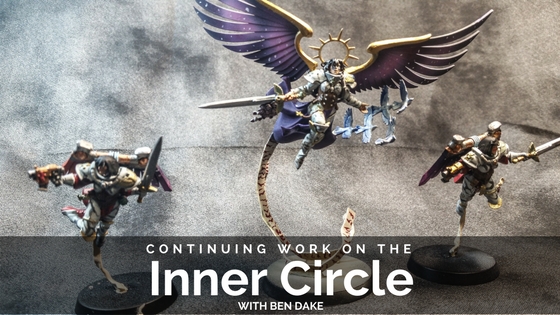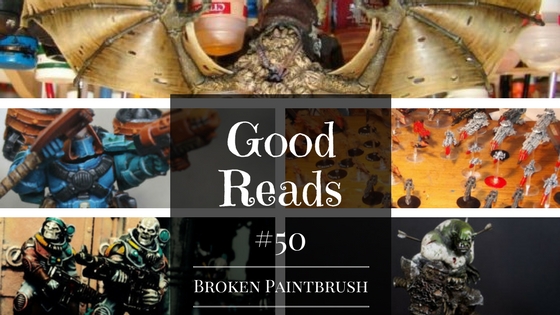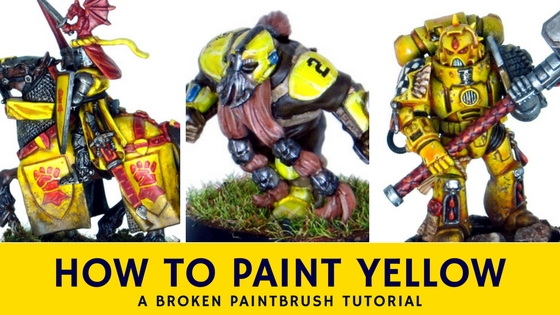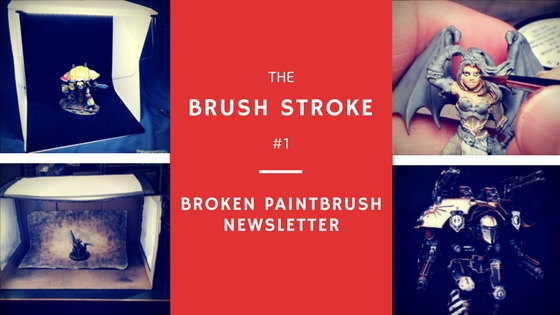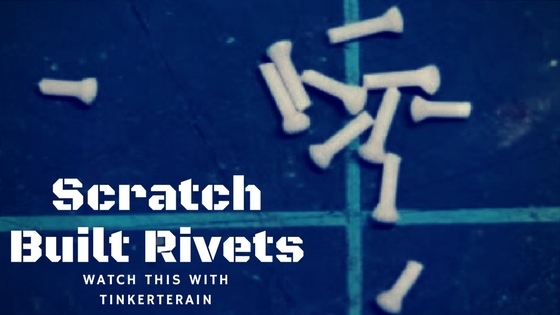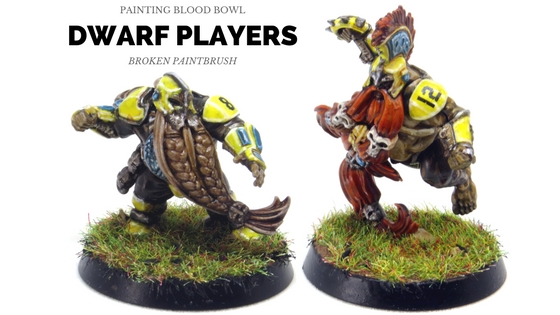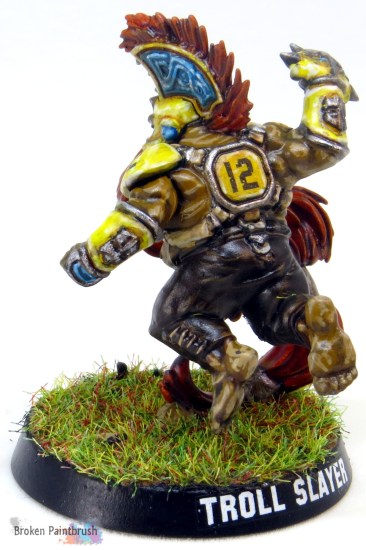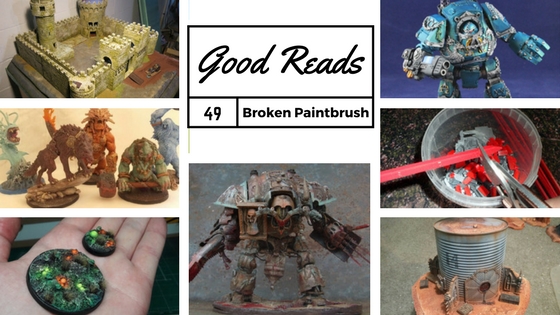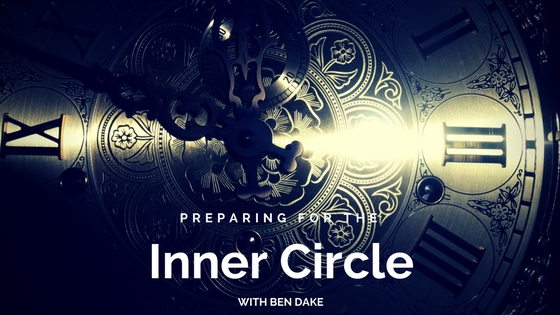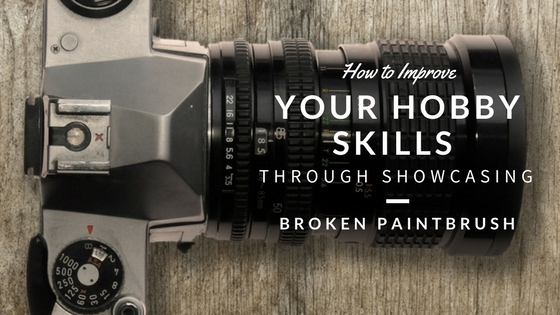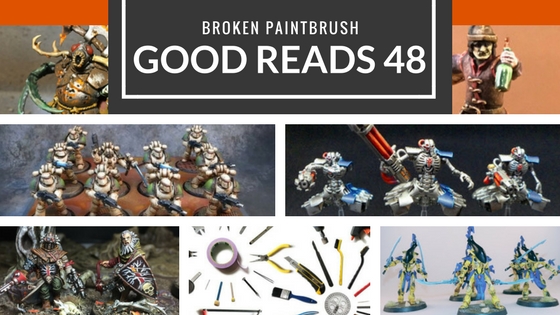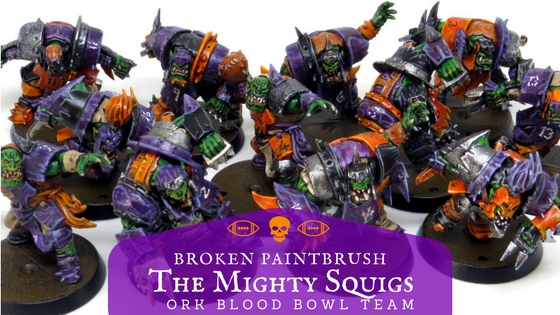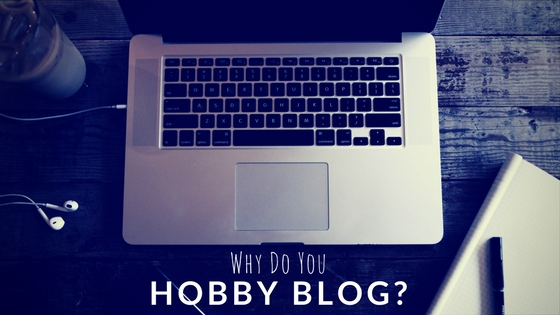Want a quick tip to improve your miniature painting skills? Post pictures of it for the world to see. No joke, this has been one of the best drivers for me how I improved my hobby skills: through showcasing.

This is part three of my series on improving your hobby skills. You can download all three parts into a single eBook by filling in the the form below.
[convertkit form=5003522]
Improve Your Hobby Skills Through Showcasing
You may think it’s odd that I would add a suggestion for showcasing your model as a way of developing your hobby skills. But it comes down to this: community feedback and incentive to improve.
With very rare exceptions, we have a very warm and encouraging community of hobbyists, and if you post your progress and ask for help, more than likely some of us will find you and encourage you to keep it up. I know because that is how I pushed myself to improve and keep at it.
This final post in my series focusing on improving your hobby skills will emphasize the following topics:
- Photographing your miniature
- Editing the pictures
- Sharing them online
Many of these are simple techniques you can start using today to take better pictures of your miniatures and join the online community. So skim through the topics, find a few that interest you, and try them out.
Photographing Your Miniature
This first section will focus on improving your skills on miniature photography. While I have a post full of tutorials, this section condenses much of that information down into easy to follow steps.
Use a Backdrop
Too many times I see posts of nice looking miniatures upon a cluttered desk or in front of a computer screen. The noise detracts from the model and viewers skip right by. So let’s start by looking at backdrops.
Simple Sheet of Paper
A simple sheet of paper leaning against a wall or box is a great improvement with minimal effort. If you let the paper bend without creasing, it creates an invisible transition from tabletop to the background. Place you mini in the middle of the flat area and take your picture.
Need a bigger background for tanks or armies? Grab a poster board for less than a dollar – just remember to use the back side as it won’t shine like the glossy front side.
Photography Backgrounds
If you want to up the game, you could get a fancy background from somewhere like Hangar 18. These provide an interesting image without the distraction. You will want to think about the colors of your army and what would look good behind them.
Picking a contrasting color can provide more pop, but too much contrast creates the same noise problem as a cluttered desk.

You can also use plain colored backdrops like black, gray, or blue. Many miniature photography kits come with a selection of basic colors to use. They may even include a green screen if you want to add some photoshop background!
Add Proper Lighting
Next up is making sure your mini gets enough lighting to show off the details and reduce camera blur. With more light bouncing off your model, the faster the camera can capture it, the less chance for moving it and causing blur.
Using Daylight
A great way to get lots of lighting on your miniature is to use actual sunshine. Place your miniature and backdrop, so the light hits it from the front. Double check to make sure you don’t provide a shadow.
Using Lamps
An easy way to get more consistent light is grabbing nearby lamps and place them in front of your model. Adjustable arm desk lamps work well as you can move them to help paint and then swivel over to your photo area.

You could even use a couple of clamp-on spot lights like these that I found at Home Depot for only a couple of bucks.
Notice how the three lights are hitting the model in my photo box? The LED string from the Foldio is from the top front. While the two lamps are lower front from each corner. This provides good light coverage on the model and reduces the shadow.
Daylight Bulbs
Regarding what lights, many people point to ‘daylight’ bulbs which are halogen or LED bulbs that are truer white than traditional yellow-hued bulbs. Since these bulbs provide light closer to white, it doesn’t change the color of your model.
The white color also helps with the automatic white balance on your camera.
Diffusion Paper
If you are finding that you are getting too much glare off of your lamps, you need to diffuse it a bit. You can pick up a pack of diffuse paper from Amazon and tape it to the lamp or grab some sheer cloth and throw over it for now.
Even a piece of paper can help reduce the glare while letting plenty of light through. The diffusion helps the light to bounce around a bit so that it hits the model from different angles.
Learn Your Camera Settings
One of the myths of miniature photography is that you need a big fancy camera to get good shots. Sure a nice DSLR and a big lens can capture things your phone could never dream of, but it can get the job done.
For all of my photography, I use a simple point-and-shoot camera or my phone.
What is more important than a fancy camera, is knowing how to use the camera. I’m not going to go into depth on all the settings, but you can check out a couple of tutorials here. The gist is that if you set your camera to macro mode (the flower icon), use the delay timer, and, ideally, use a tripod your pictures will turn out much better.
Macro Mode
Selecting ‘macro’ mode on your camera is done by selecting the flower icon in its settings. This tells the camera to focus on things that are closer to the lens, such as your mini. For camera nerds, this is done by opening up the aperture to shorten the focal length.
For the rest of us, this mode helps the camera use its auto-focus on objects closer to the lens, capturing the details of your model.
Zoom
To get the best picture as possible of your miniature, you want to have it fill as much of your picture as possible. While you can later edit the image by cropping out the extras (more below), you still want to start with as high of resolution image as possible.
But you should only use the optical zoom options of your camera as the digital zoom is nothing more than pre-cropping the image. So cell phones are stuck at moving the phone closer.
Place the camera about a foot away from the miniature and zoom in as much as the auto-focus will allow. If you are using the macro mode, some cameras will automatically disable it if you zoom too much. Instead, find where you can fill the image as much as possible with your miniature, but still have it focus.
Delay Timer
A blurry image can ruin any chance of showing off your model. Often the blur is the camera out of focus with the miniature but may be due to you shaking the camera as you press the shutter button.
Using macro mode can help with the focus and a tripod with the shaking, but using the delay timer can eliminate the camera shake. Usually, this delay timer is used for group shots so you can hit the shutter button and run to join the group.
If you set it to the lowest value, you can get everything set up, hit the shutter, and brace your hands while it counts down.
Use a Tripod
 Whether it is a floor standing tripod or a small Gorillapod, a tripod will hold the camera steady as you take the pictures. This not only helps to reduce the camera shake but will also allow you to adjust the miniatures around until they fit well within the image.
Whether it is a floor standing tripod or a small Gorillapod, a tripod will hold the camera steady as you take the pictures. This not only helps to reduce the camera shake but will also allow you to adjust the miniatures around until they fit well within the image.
You could pay a lot of money for a quality tripod, but we only need a steady platform. So the Amazon Basics tripod works perfectly without being expensive.
F-stop and ISO Settings
Advanced techniques will have you adjust the f-stop and ISO settings which allow more light and increase the depth of view. So the sword pointing out is in focus as well as the character behind it.
To change these settings, you often have to be in manual mode on your camera. See your camera’s manual on how to adjust these settings.
Once you have your miniature, lighting, and tripod all set up, adjust the ISO settings until the miniatures are bright but not washed out. A higher ISO number will allow more light into the camera, creating a brighter image. But if you let too much light in, the details and brighter areas loose crispness.

Comparison of f/32 (top-left corner) and f/5 (bottom-right corner)
From Wikipedia
F-stop setting changes the depth of focus that the camera can capture. For single miniatures, this value may not be as important, but for groups or large miniatures, increasing the f-stop will allow for more models to be in focus.
You will want to set this number to be as high as possible to allow as much of the miniature to be in focus. But as you can see from the pictures of flowers, a dramatic battle scene could be created by keeping the background somewhat blurry.
Photo Editing for Miniatures
With Instagram becoming more popular in our hobby, many have already used simple photo editing with filters. I break it down into two steps: cropping and color adjustment.
Simple Editing with GIMP

I will do a quick overview of both, but you can check out my post on editing with GIMP here. This is the free tool I use to quickly edit all of my pictures.
Cropping
Cropping is where you cut out all the extra parts of the image. This is important since basic cameras can only zoom in so far. Cropping the picture takes care of the rest. I like to crop down as much as possible on the miniature as it provides the best look on the blog.

Depending on what you are trying to highlight in a particular image, you could even crop out parts of the miniature. A good example of this is if you want to show the model’s face. Cropping down to just the head helps show the details of the face better and allows your viewers to see what you are discussing.
White Balance
The second edit you can do to the pictures is to adjust the color. By this, I don’t mean to ‘paint’ in things that don’t exist, but rather correct wrong white balance from the camera.
This correction is even more important if you don’t have adequate lighting or using a basic camera. But it is also easy to overcome as ‘Auto Balance’ often gets the job done.

Even with good lighting, digital cameras can get confused as to what ‘white’ is and can turn the image blue or yellow. Using auto correct in your image editor of choice will often fix this as well as bring out more of the color.
Advanced Editing
Between cropping the image and using auto balance, you already have a huge leg up on improving the look of your photographs. If you want to learn more advanced editing such as color control and to remove the background, then read my Advanced Photo Editing post.
App Filters
Artistic edits with filters in Instagram or other apps can be easy alternatives to GIMP or Photoshop. The tool can crop down the image and the filters can not only provide white balance options but also change the mood of the picture.
By changing the mood of the image with blue or red tints, you can provide a more dramatic feeling. This is perfect for in-game pictures or narrative shots. The gray tone filter is also popular with work in progress shots as it helps focus on the look rather than the unpainted plastic and green putty.
Share Your Pictures
Speaking of Instagram, posting your images to social media is a great way to get feedback with minimal setup. There are a ton of other hobbyists that create accounts specifically for their hobby work so you can fill your feed with inspirational posts rather than someone’s dinner.
While I am not active on all the different social media platforms or forums, I try to talk through each for you here. Find one that fits your preferences and join the community there.
Twitter
 For interaction and hobby dialog, I would recommend Twitter. It is the one I’m most active on and has an awesome community. The ability to post picture and text updates means you can share pictures of your miniatures and join in conversations.
For interaction and hobby dialog, I would recommend Twitter. It is the one I’m most active on and has an awesome community. The ability to post picture and text updates means you can share pictures of your miniatures and join in conversations.
If you use the hashtag #warmongers other hobbyists can find you and will comment with recommendations if you need help. Post finished minis on Mondays with #miniaturemonday and WIP pics with #wipwednesday to quickly get found.
Instagram
 Instagram is great if you like seeing pictures, but it doesn’t provide much in the way of interaction. It is simple to get started in that you upload a photo, give it a description, and include some hashtags. The hashtags basically categorizes the picture so others can find it. Start with #paintingwarhammer and go from there.
Instagram is great if you like seeing pictures, but it doesn’t provide much in the way of interaction. It is simple to get started in that you upload a photo, give it a description, and include some hashtags. The hashtags basically categorizes the picture so others can find it. Start with #paintingwarhammer and go from there.
I use Instagram for inspiration or when I have a spare moment or two and want to get a quick hobby fix. But I rarely see comments on pictures or conversations.
Facebook and Google+
 Facebook and Google+ both have many subgroups with active members including the 1houranight on Facebook and the 40k group on G+. Post your progress or questions and fellow hobbyists will reply with their feedback.
Facebook and Google+ both have many subgroups with active members including the 1houranight on Facebook and the 40k group on G+. Post your progress or questions and fellow hobbyists will reply with their feedback.
The Facebook group Miniature Painting Tips And Tricks. Showcase And Share Your Secrets has all sorts of artists and hobbyist posting helpful articles or picture tutorials.
Both of the communities provide a nice mix of pictures and conversations.
Blog
The next level of showcasing your miniatures is writing your own blog. This provides the ultimate level of control with how you share your pictures and what you write. But it is the hardest path.
You can get something set up for free at Blogspot or WordPress.com fairly quickly. From there it is as simple as writing posts and loading pictures. To build a reader base, check out the collection of tips for hobby bloggers and just keep writing.
Wrap Up
To sum up this whole post: get your miniatures out there for the world to see and join the community. Seek feedback from others and learn from their responses. By putting your work out there, it can provide a big motivator to try new techniques and improve your painting.
If you have other tips for improving your ability to showcase your minis, leave them in the comments below.







